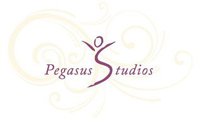 |
| The Pegasus graduating class of 2008 Photo credit: Katherine Aczel |
Growing up with a dance studio as your next door neighbour
is something that few people can lay claim to, and I am one of those lucky few.
I never used to get away with being late for class. What could I say? “The
traffic on the sidewalk was terrible!” But who would want to be late anyway?
Dance class was always the best part of my day. Starting dance classes at the
age of three meant that as I grew up, my love of dance grew with me. It was
nurtured by supportive teachers and family, tested during times of hardship, burnt
out almost completely by broken dreams and injuries, and rekindled over and
over by that undying desire to move and express. That is true love, a love that
has lasted my whole life and a love that will never die. I would have never
found that love without Pegasus.
 |
| Jessica Houghton - age 5 Photo credit: Katherine Aczel |
At Pegasus there was never a question or a doubt about
whether or not you would be accepted. Everyone was welcome and everyone felt they
belonged there, and it is still the same today. The teachers are more than just
teachers, they are friends and mentors. The students become a part of the
family as well, knowing that they can turn to any family member in times of
need and find solace. Everyone contributes to making the studio what it is, a
home.
Since leaving Pegasus, I have spent the past three and a
half years at York
University York National Ballet School











